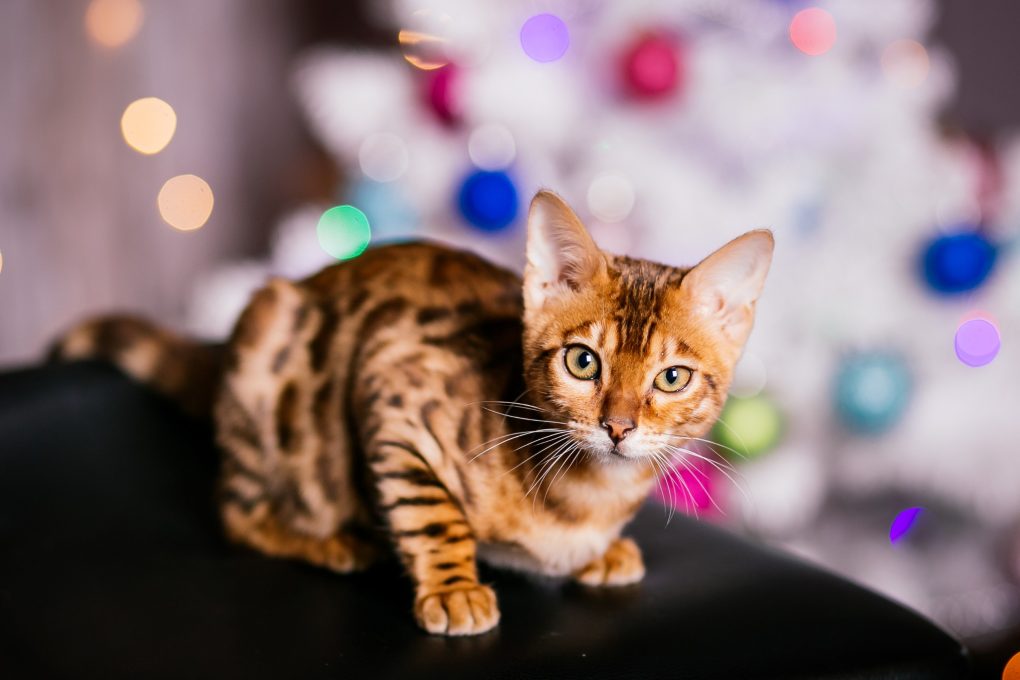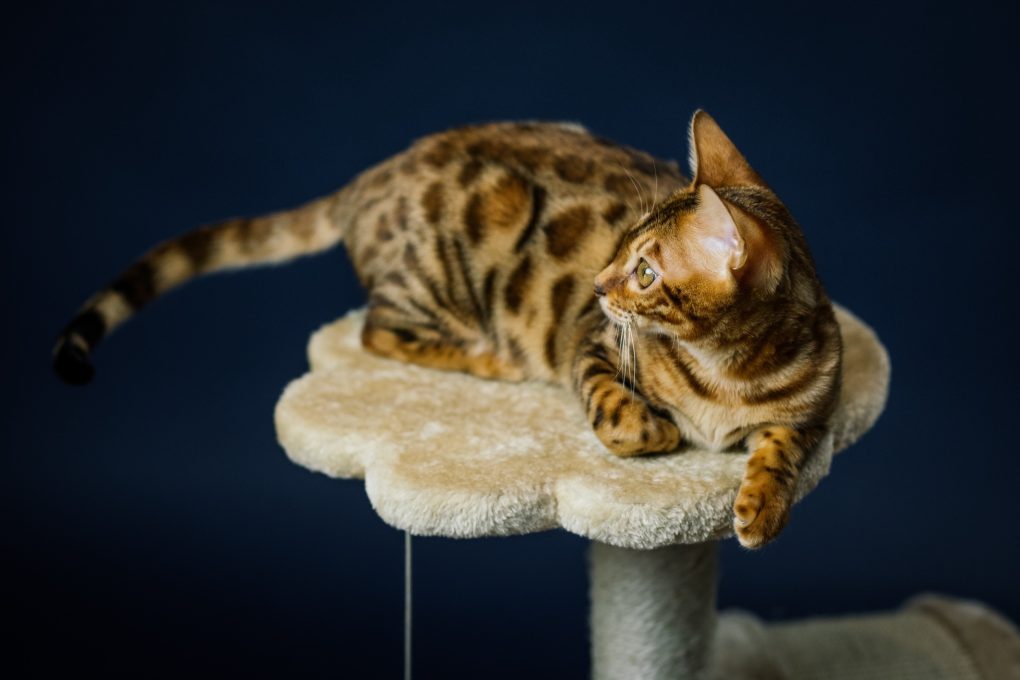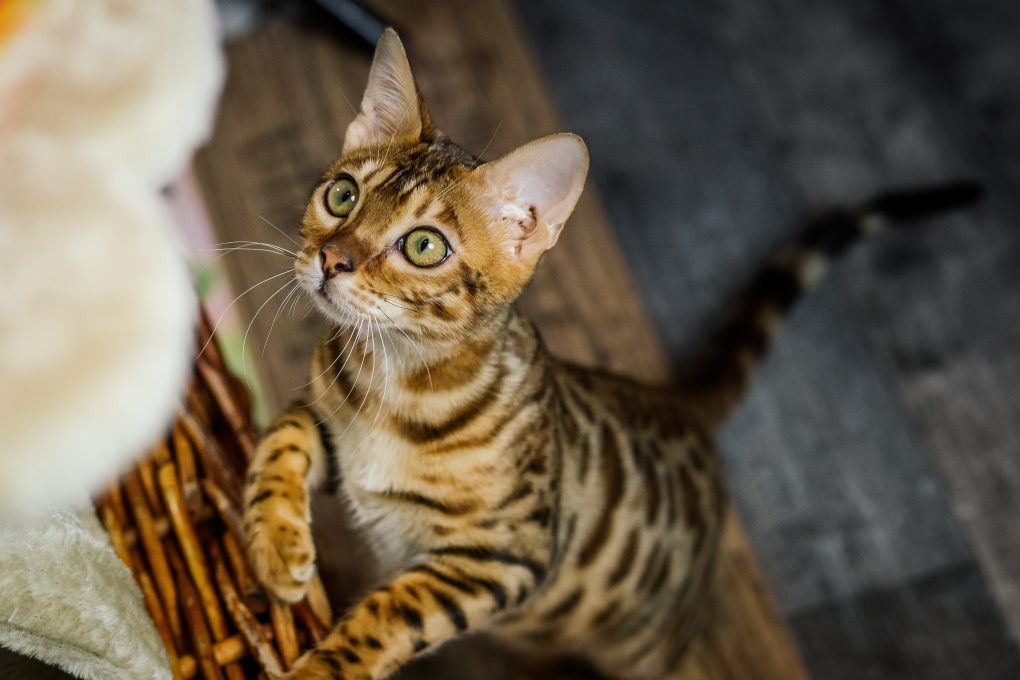Can Bengal Cats Have Stripes: The Distinct Appearance of a Bengal Cat, Its Patterns and Colors
Yes, Bengal cats can have stripes. They are a domestic cat breed known for their wild-looking coat patterns, which often include spots, marbled patterns, and stripes. The Bengal’s coat pattern is a result of a genetic mutation.
The patterns vary of Bengal cats vary, ranging from solid colors such as black, grey, and white to stripes and blotches. One of the most common coat patterns in Bengal cats is a tabby coat with tabbies (stripes) on the back and legs and tabbies on the face.


Some Bengals have a “snowy” or “tiger” pattern of dark and lighter points. Other Bengal coat patterns include a “doodle” or “paw print” pattern made of large, distinct circles and a “marble” pattern made of tiny dots.
Markings found on Bengals can also be hereditary, meaning they appear after only one or two generations of breeding. However, other markings are not genetically inherited and appear naturally as parts of each cat’s unique genetic makeup.
Most Bengal cat breeds have a thick double coat that helps them survive in warm climates. In addition to their unique markings, Bengals have unique physical features, such as medium-sized frames, high-set ears, round eyes, and high tails.
Table of Contents
Bengal Cats Have Distinct Appearance and Personality
A Bengal cat is a domestic cat with distinctive markings and markings on its coat, with a wild-looking appearance, and the stripes on its coat can vary in color and length and are usually prominent.
They are a relatively new breed, created by breeding an Asian leopard cat with a domestic cat, which gives them a unique coat pattern with spots or marbled patterns. Their coat can come in various colors such as brown, silver, charcoal, blue, and melanistic.
In addition, they are known for their energetic and playful personalities and are considered one of the most expensive cat breeds. They are good house pets, given that Bengal cats are friendly and outgoing, making them great companions for people of all ages.
Bengal Cat Coat Patterns
Spotted
The spotted coat is the most common pattern Bengal cats are known for. Large, symmetrical spots on a light brown or black background characterize it. The spotted coat is not limited to Bengal cats; you can also find it in other cat breeds.
The spots can be shades of brown, from a light tan to dark chocolate, and can be outlined in black. Some spotted Bengals may also have a “glitter” effect in their coat, which is caused by tiny reflective hairs that give the coat a shimmering appearance. The background color of a spotted Bengal’s coat can be anything from light cream to dark orange.


The spotted coat results from a random mutation and is not bred for any specific purpose. It is unclear why this particular mutation occurred in the domestic cat population. Still, many possible explanations exist, such as lousy cat breeders or a high rate of feline DNA mutation. Regardless of the reason, the spotted coat is a unique and exciting characteristic of the Bengal cat breed.
Marbled
A marbled Bengal cat coat is another typical pattern found in the breed. It is characterized by swirling or blotchy patterns that resemble the veins of marble, and it is characterized by alternating light and dark patches on the coat.
The patterns are usually irregular and asymmetrical, giving each marbled Bengal a unique appearance. These patches can be of almost any shape or size, from small spots to large rosettes, and they often have a marble-like appearance. The marbled pattern is caused by a specific gene called agouti, which causes random banding of light and dark hair on the coat.
Marbled Bengal cats are typically lighter in color than other Bengals and may have darker stripes. They are often chosen for their looks, as they tend to be healthier than other Bengals. These cats are popular as pets, as they tend to be friendly, affectionate, and playful. They make excellent family companions, as they are playful but also calm and gentle around children.
Bengal Cat Coat Colors
Bengals are recognized for their unique markings, varying in color from light to dark. The colors of a Bengal’s markings do not directly correlate to the cat’s sex or age. Most Bengal cats have two colors as part of their coat pattern: a solid base coat and one or more colorful patterns.
The Bengal cat breed has a variety of different colors, which gives owners the option to choose a cat that perfectly matches their personality and preferences:
- Brown: The brown Bengal cat is the most common and is distinguished by its distinctive stripes. A Brown Bengal cat is a domesticated feline characterized by its distinctive brown or “tawny” coat color.
- Snow: A snow Bengal is characterized by its white or “snow” colored coat. They are created by breeding a Bengal cat with a white domestic cat. It’s worth noting that Snow Bengals are still a subject of debate among Bengal enthusiasts and breeding organizations, as it still needs to be considered a standard color for the breed.


- Silver: A silver Bengal is a variation of the Bengal breed, characterized by its silver or gray-colored coat. They are created by breeding a Bengal cat with a silver or gray domestic cat.
- Charcoal: This Bengal cat color has distinctive black and tan markings. It has a soft, plush coat that is easy to care for. The charcoal Bengal variant of this breed has a unique coloration characterized by its dark, charcoal-colored coat. Charcoal Bengals are considered a standard breed color and are recognized by some Bengal breeding organizations.
- Blue: A Blue Bengal cat has blue or grayish-blue colored coats that can appear to have a frosted or smoky appearance. They have bright copper or green eyes that stand out against their coat. These cats are typically calm and gentle but can be playful and active if kept entertained.
- Black/Melanistic: The black (melanistic) Bengal cat is one of the most popular varieties and has a striking black coat. These cats have a unique appearance and are exciting to watch as they play and explore their environment. Melanistic Bengals have distinctive black coats with spots or marbled patterns that can be hard to see against their dark coat but can be visible under specific lighting.
